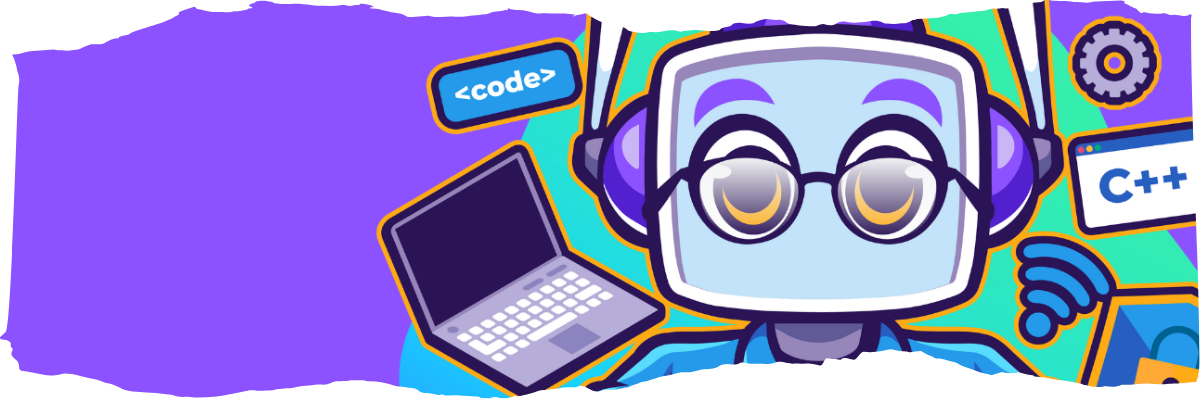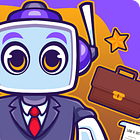5 Ways Generative AI is Transforming Creative Industries
How Artificial Intelligence is Redefining Creativity Across Media and Design
Generative AI is redefining creative industries.
Generative AI is redefining the graphic design, music, film and game development industries, by offering powerful tools that produce original content. This technology, driven by sophisticated algorithms and machine learning, analyzes vast datasets to generate novel creations, sparking both excitement and anxiety among creative professionals. While offering unprecedented opportunities to enhance workflows and redefine artistic expression, it also necessitates a critical examination of the challenges and shifts it brings to the very nature of creative work.
Table of Contents
🚀 Supercharging Content Creation Speed and Efficiency
🤝 Democratizing Access to Creative Tools and Skills
✨ Expanding the Boundaries of Creative Exploration and Innovation
🎯 Enabling Personalized and Dynamic Content Experiences
🤖 Fostering New Forms of Human-AI Collaboration in the Creative Proce
🏁 Conclusion
🕖 Short on time? - A TL;DR section has been provided for you at the end of this post.
Supercharging Content Creation Speed and Efficiency
Generative AI is significantly accelerating the pace of content creation across numerous creative fields.
🎨 Graphic Design
Generative AI is streamlining graphic design workflows by automating tedious tasks, allowing designers to focus on higher-level creative work.
AI automates tasks like image manipulation (background removal, canvas expansion), resizing, and style consistency.
Platforms like Canva integrate AI for instant template and layout creation.
🟢 Benefits: Increased productivity, faster turnaround, and focus on strategic thinking.
🔴 Concerns: Job displacement for routine tasks, over-reliance on AI, and decline in fundamental skills.
🎵 Music Composition
The music industry is witnessing a significant acceleration in production speed thanks to AI's ability to analyze and replicate musical patterns.
AI generates original music by analyzing patterns in existing data.
Tools like Soundful, AIVA, Mubert, MusicLM, and MusicGen facilitate rapid prototyping.
🟢 Benefits: Faster background music production, reduced licensing costs, and exploration of new styles.
🔴 Concerns: Originality of AI-generated music, devaluation of human musicianship, and copyright issues.
✍️ Writing and Journalism
AI is becoming a valuable tool in writing and journalism, assisting with various tasks to improve efficiency and speed.
AI assists with headlines, summaries, transcriptions, and SEO keyword suggestions.
News organizations like The New York Times and BBC are experimenting with AI workflows.
🟢 Benefits: Increased research efficiency, faster routine reports, and personalized content.
🔴 Concerns: AI "hallucinations" (inaccurate information), job displacement, and plagiarism.
🎬 Video Production and Filmmaking
The realm of video production and filmmaking is being transformed by AI's ability to accelerate workflows across various stages of production.
AI aids scriptwriting, visual effects, and editing.
Tools like Sora, Runway, Descript, and Synthesia, and AI-generated films like "The Frost," demonstrate diverse applications.
🟢 Benefits: Faster production, reduced costs, and empowerment of independent filmmakers.
🔴 Concerns: Job displacement for actors, writers, and editors, ethical use of AI performances, and inauthentic productions.
🎮 Game Development
In game development, generative AI is significantly boosting content creation, offering tools to generate assets, narratives, and streamline testing.
AI generates game assets, dynamic narratives, and automates testing.
Companies like Capcom use AI for rapid iteration.
The “AI Director” in left 4 dead uses real time alterations to gameplay.
Tools like Ludo and Meshy AI aid in asset and procedural design.
🟢 Benefits: Increased asset creation efficiency, dynamic gameplay, and faster iteration.
🔴 Concerns: Job displacement for artists and testers, loss of artistic control, and ownership of AI-generated content.
🔄 Overall Shift
Beyond mere acceleration, the adoption of generative AI is leading to a fundamental shift in the roles of creative professionals.
Transition from manual creation to curating, prompting, and strategizing with AI.
Necessitates re-evaluation of skill sets and workflows.
Democratizing Access to Creative Tools and Skills
Generative AI is breaking down traditional barriers to entry in creative fields by making sophisticated tools and capabilities more accessible to a wider audience, regardless of prior training or extensive resources. This democratization has the potential to empower a new wave of creators and foster innovation from unexpected corners.
🌐 Overall Impact:
Generative AI is lowering barriers to entry in creative fields.
Sophisticated tools and capabilities are becoming accessible to a wider audience.
This empowers new creators and fosters innovation.
💡 Specific Examples:
Graphic Design:
AI-powered platforms with intuitive interfaces and templates enable non-professionals to create visuals.
Canva's AI integration is a key example.
Music Composition:
User-friendly AI music generators allow individuals without formal training to produce music.
Platforms like Soundful simplify music creation with genre and mood parameters.
Video Production:
AI video editing software simplifies complex processes for non-professionals.
Descript and its text based editing are an example of this simplification.
👍 Positive Impacts:
Empowerment of individuals to express creativity.
Emergence of citizen creators and independent artists.
Potential for innovation from diverse perspectives.
⚠️ Concerns and Challenges:
Potential devaluation of specialized skills and expertise.
Questions regarding the quality and originality of AI-generated content by non-professionals.
Blurring lines between amateur and professional creators.
Maintaining standards of quality in an AI-driven world.
The lowering of barriers to entry through AI could fundamentally alter the creative landscape, potentially blurring the lines between amateur and professional creators. While this could certainly spur innovation and broaden participation, it also compels a discussion about maintaining standards of quality and the value attributed to specialized creative skills in an increasingly AI-driven world.
Expanding the Boundaries of Creative Exploration and Innovation
Generative AI is not just about speed and accessibility; it's also proving to be a powerful catalyst for expanding the very boundaries of creative exploration and fostering innovation.
✨ AI as a Creative Catalyst:
AI assists with overcoming creative blocks by generating design suggestions, musical ideas, and brainstorming assistance.
Meghan Murphy (ONA) utilizes AI as a "thought starter" for blog posts.
Artists can rapidly experiment with new styles, genres, and variations.
Illustrator's Generative Recolor feature enables exploration of diverse color palettes via text prompts.
AI analyzes vast datasets, identifying patterns and generating novel creative outputs.
Demonstrated by AI's capacity to create complex musical compositions.
👍 Positive Impacts:
Enhanced overall creativity.
Exploration of previously unimagined solutions.
Generation of highly unique and personalized content.
⚠️ Potential Negative Consequences:
Risk of homogenization of creative output due to limited or biased datasets.
Potential decline in original human thought and independent idea generation due to over-reliance.
While AI offers an undeniable power to spark creativity and push artistic boundaries, it is crucial to recognize the potential for it to inadvertently limit diversity and originality if not used thoughtfully. Maintaining human autonomy and a strong artistic vision in the interaction with AI tools is essential to ensure that this technology serves as an inspiration rather than a constraint.
Enabling Personalized and Dynamic Content Experiences
Generative AI is also enabling the creation of highly personalized and dynamic content experiences across various creative industries.
🔍 Specific Examples:
Music:
AI analyzes user preferences for tailored recommendations.
AI generates dynamic playlists adapting to moods or activities.
Real-time music adjustment based on user state.
Games:
AI creates adaptive narratives based on player choices.
"AI Director" systems (e.g., in Left 4 Dead) dynamically adjust gameplay.
Advertising:
AI analyzes consumer data for personalized messages and visuals.
👍 Positive Impacts:
Enhanced user engagement through tailored content.
More immersive and interactive experiences.
Potential for increased marketing effectiveness.
⚠️ Negative Considerations:
Creation of filter bubbles and echo chambers.
Privacy risks from personal data collection and use.
Ethical concerns regarding manipulative personalization.
The capability of AI to personalize content offers exciting possibilities for enhancing user experiences. However, it also necessitates a robust discussion and implementation of safeguards to address the ethical implications surrounding data privacy, algorithmic bias, and the potential for creating increasingly fragmented and isolated digital environments.
Fostering New Forms of Human-AI Collaboration in the Creative Process
Perhaps one of the most significant evolutions is the way generative AI is fostering new forms of collaboration between humans and artificial intelligence in the creative process.
🔗 Human-AI Partnership:
AI tools are seen as creative partners, not replacements.
Graphic designers use AI for initial layouts, then customize them.
AI aids research and analysis for writers and journalists.
AI handles technical tasks (audio mastering, video editing).
AI frees up humans for artistic and strategic focus.
AI contributes to improved quality and efficiency.
👍 Positive Impacts:
Potential for higher quality final creative work.
Increased focus on unique human insights and strategic thinking.
Enhanced efficiency and overall productivity.
⚠️ Potential Downsides:
Risk of decline in fundamental creative skills due to over-reliance.
Potential loss of creative control if AI suggestions are not critically evaluated.
Necessity for new skills in prompting and guiding AI.
The future of creative industries will likely be defined by a symbiotic relationship between human ingenuity and artificial intelligence. Creative professionals who proactively learn to collaborate effectively with AI tools, understanding both their capabilities and limitations, will be best positioned to thrive in this evolving landscape. This requires not only the acquisition of new technical skills but also a willingness to adapt traditional workflows to leverage the unique strengths that both humans and AI bring to the creative process.
Conclusion
Generative AI is undeniably reshaping the foundations of creative industries. Its impact is far-reaching and multifaceted, spanning content creation acceleration through democratized access and the expansion of creative boundaries.
Generative AI is fundamentally reshaping creative industries, offering both opportunities and challenges.
Opportunities: Increased efficiency, enhanced creativity, new artistic expression.
Challenges: Job displacement, skill devaluation, ethical concerns (authorship, bias, privacy).
Adaptation is key for creative professionals; embracing AI and developing collaborative skills is crucial.
Ethical concerns must be addressed through guidelines and regulations for a sustainable future.
AI's integration will continue to evolve, but human creativity and artistic vision will remain essential.
TL;DR
Impact:
Speeds up content creation.
Democratizes access to creative tools.
Expands creative exploration.
Enables personalized content.
Fosters human-AI collaboration.
Benefits:
Increased efficiency.
Enhanced creativity.
New artistic expression.
Personalized user experiences.
Challenges:
Job displacement.
Skill devaluation.
Ethical concerns (bias, privacy).
Key Takeaways:
Adaptation is crucial for creative professionals.
Ethical guidelines are needed.
Human creativity remains essential.
Sources
https://muhtalhakhan.medium.com/the-future-of-creative-industries-with-generative-ai-32d044ee5ea0
https://magai.co/generative-ai-has-transformed-creative-work/
https://sloanreview.mit.edu/article/how-genai-changes-creative-work/
https://www.adobe.com/products/firefly/discover/ai-for-graphic-designers.html
https://www.sganalytics.com/blog/how-ai-is-changing-the-future-of-music-composition-and-production/
Content was researched with assistance from advanced AI tools for data analysis and insight gathering. 














